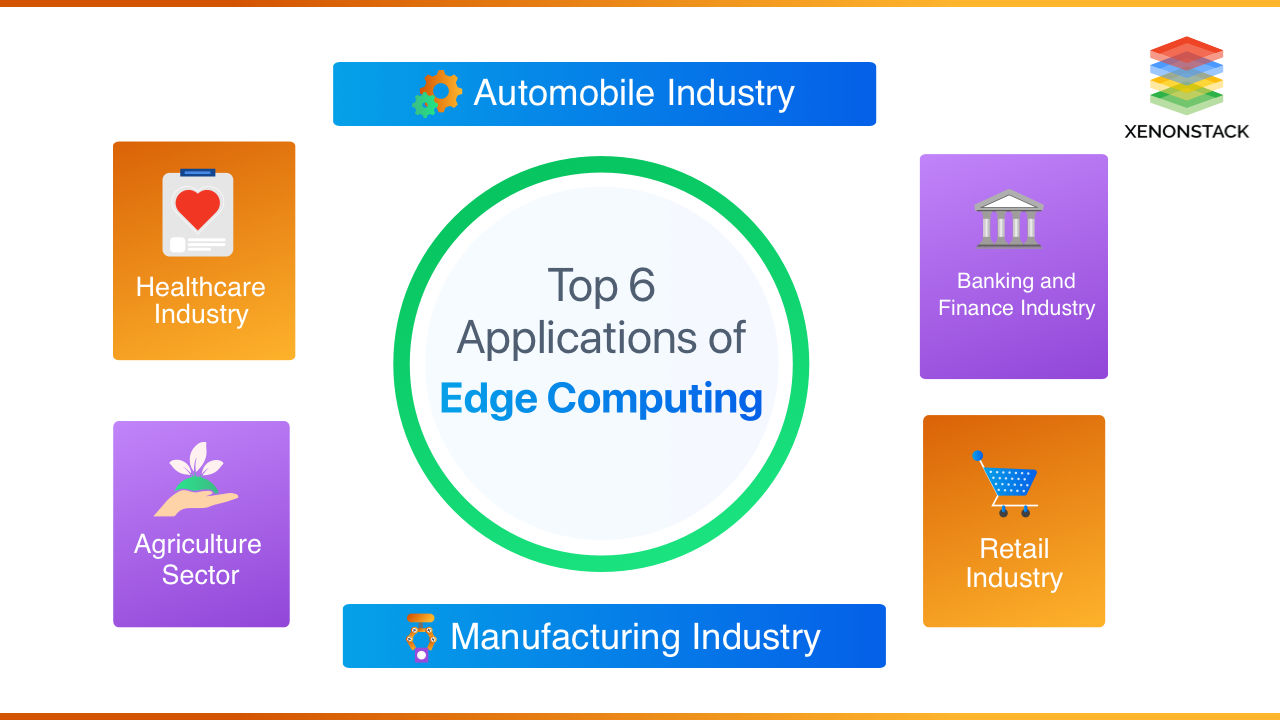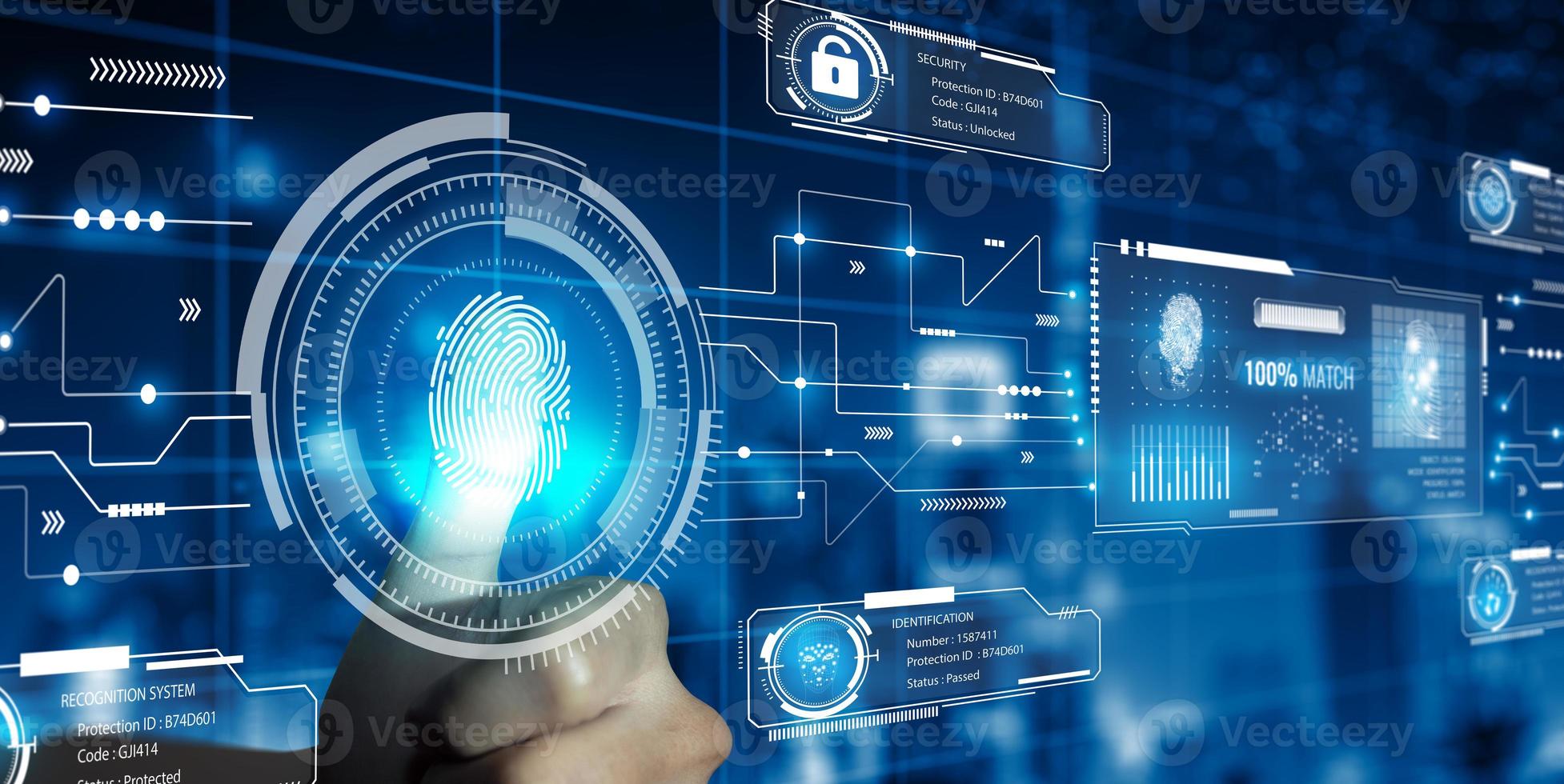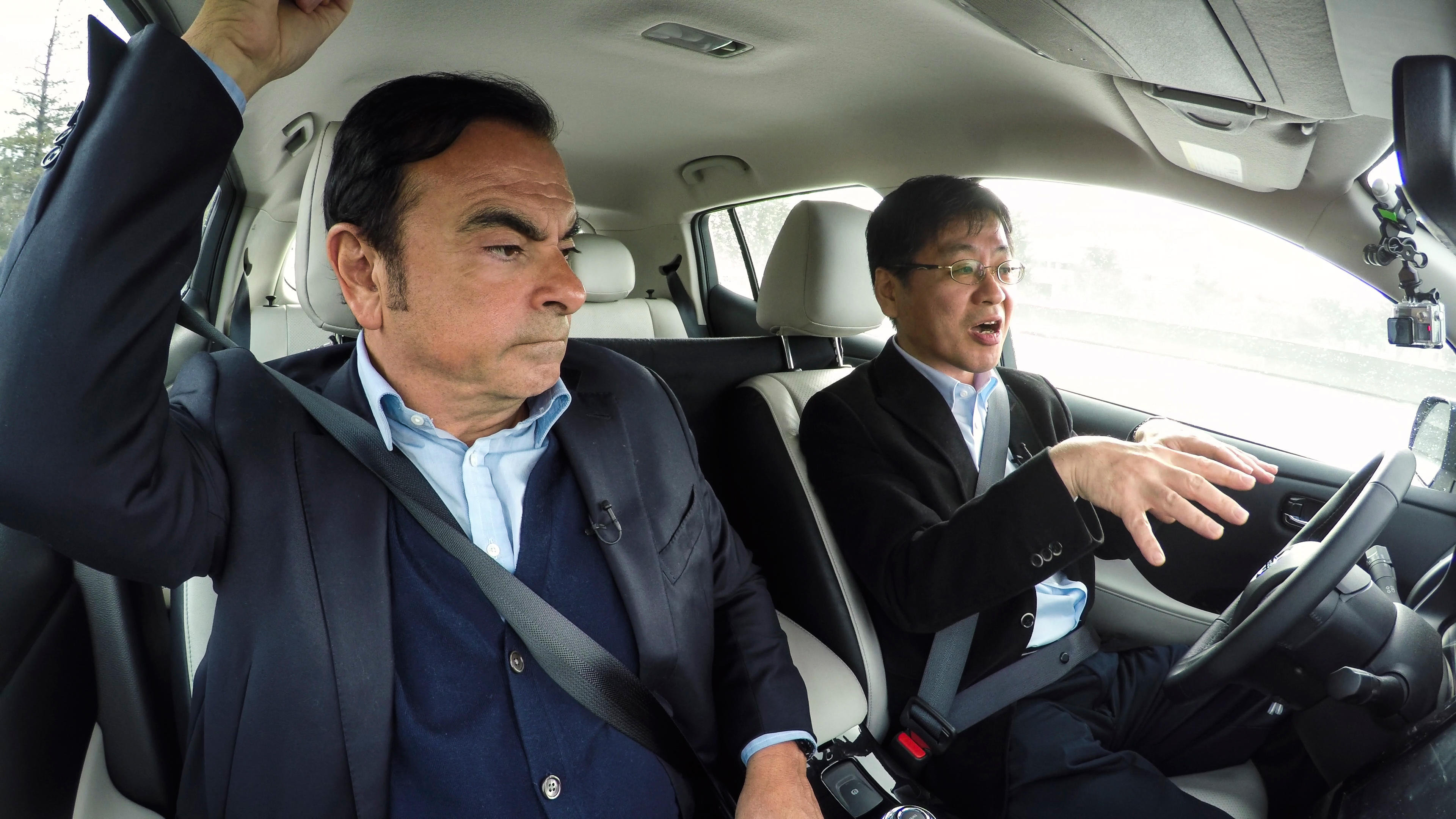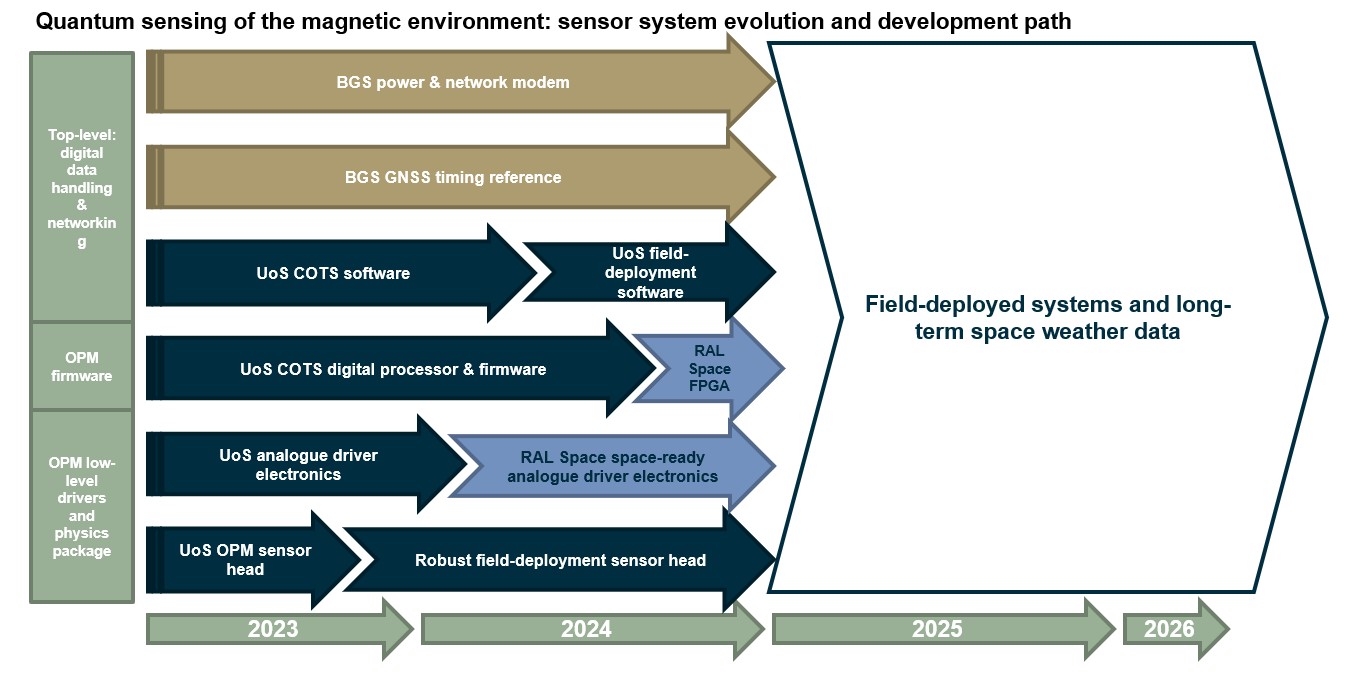

Absolutely, here’s the article:
Edge Computing: Diverse Applications
Understanding Edge Computing
Edge computing has emerged as a transformative paradigm in the realm of technology. Unlike traditional cloud computing, which centralizes data processing, edge computing brings computation closer to the data source, reducing latency and enabling real-time processing. This distributed approach offers a multitude of applications across various industries.
Enhanced IoT Capabilities
One of the primary domains benefiting from edge computing is the Internet of Things (IoT). By processing data closer to IoT devices, edge computing reduces latency and improves response times. This advancement enhances IoT capabilities, enabling faster and more efficient data analysis, which is crucial for IoT applications in smart homes, industrial IoT, and healthcare.
Edge Computing in Autonomous Systems
Autonomous systems heavily rely on quick decision-making based on real-time data. Edge computing plays a pivotal role in providing the computational power necessary for autonomous vehicles, drones, and robotics. By processing data at the edge, these systems can operate efficiently and safely with reduced dependence on centralized servers.
Retail and Customer Experience Enhancement
In the retail sector, edge computing facilitates personalized customer experiences. By analyzing data at the edge, retailers can offer real-time recommendations, optimize inventory management, and provide enhanced in-store experiences, such as cashier-less checkouts or interactive displays.
Telecommunications and Network Optimization
Edge computing significantly impacts telecommunications by decentralizing data processing. Telecom providers leverage edge computing to optimize networks, reduce latency, and improve content delivery. This advancement is crucial for the seamless deployment of high-bandwidth applications like video streaming and online gaming.
Healthcare and Remote Patient Monitoring
Edge computing revolutionizes healthcare by enabling remote patient monitoring and real-time health data analysis. Wearable devices equipped with edge computing capabilities can track vital signs, analyze data locally, and send relevant information to healthcare providers, ensuring timely interventions and personalized care.
Edge Computing Applications continue to expand across industries, driving innovation and efficiency. To explore the diverse implementations and understand the impact firsthand, visit Edge Computing Applications for comprehensive insights.
Feel free to adjust or expand upon this article according to your needs!
Absolutely, here’s the article:
IoT: Fostering Sustainable Living
Introduction to IoT in Sustainable Living
The Internet of Things (IoT) has emerged as a powerful tool in fostering sustainable living practices. By connecting devices and systems, IoT enables the collection and analysis of real-time data, empowering individuals and organizations to make informed decisions that positively impact the environment.
Energy Efficiency through Smart Home Devices
IoT plays a pivotal role in optimizing energy consumption in households. Smart home devices, equipped with IoT technology, monitor energy usage and enable remote control of appliances. These devices help users identify energy-wasting patterns and optimize their usage, contributing to reduced energy consumption and lower utility bills.
Smart Grids and Sustainable Energy Management
IoT facilitates the development of smart grids, revolutionizing energy management. Smart meters and sensors embedded in electrical grids monitor usage patterns, allowing for better load balancing and more efficient energy distribution. This technology integration enhances grid resilience and encourages the use of renewable energy sources.
Waste Management and Environmental Monitoring
In sustainable living, IoT applications extend to waste management and environmental monitoring. Smart waste bins equipped with sensors optimize waste collection schedules, reducing unnecessary pickups. Environmental sensors gather data on air quality, water levels, and temperature, enabling proactive measures to mitigate environmental risks.
Smart Agriculture and Conservation Efforts
IoT transforms agricultural practices through precision farming. Sensors in fields monitor soil moisture, temperature, and crop health, optimizing irrigation and reducing water usage. Additionally, IoT aids conservation efforts by tracking and protecting endangered species through wildlife monitoring systems.
Challenges and Advancements in IoT for Sustainability
Despite its transformative potential, IoT for sustainable living faces challenges. Issues such as data privacy, interoperability, and cybersecurity must be addressed for widespread adoption. However, advancements in IoT technology, coupled with collaborative efforts, continually pave the way for more sustainable living solutions.
IoT for Sustainable Living is a catalyst for positive environmental change. To explore the myriad applications and understand the impact firsthand, visit IoT for Sustainable Living for comprehensive insights.
Feel free to modify or expand upon this article as needed!


Innovative Health Monitoring Wearables
Health monitoring wearables have emerged as a pivotal tool in the realm of personal health management, offering users real-time insights and empowering proactive healthcare decisions. These wearable devices encompass a diverse range of technologies, from smartwatches to fitness trackers, revolutionizing how individuals monitor and manage their well-being.
The Evolution of Wearable Technology
The evolution of wearable technology has revolutionized how health data is collected, analyzed, and utilized. These devices utilize sensors to track various health metrics such as heart rate, activity levels, sleep patterns, and even blood oxygen levels, providing users with comprehensive insights into their overall health and fitness.
Health Monitoring Wearables serve as a central resource for understanding the spectrum of wearable devices. This platform curates insights into the latest advancements and applications, highlighting the transformative potential of wearables in personal health monitoring.
Facilitating Active Health Management
Health monitoring wearables empower individuals to take an active role in their health management. These devices provide real-time feedback, motivating users to make healthier lifestyle choices, increase physical activity, improve sleep quality, and monitor specific health parameters, fostering a proactive approach to well-being.
Enhancing Personalized Health Insights
The data collected by health wearables facilitates the generation of personalized health insights. Through AI-driven analytics and machine learning algorithms, these devices provide tailored recommendations and actionable insights, guiding users to make informed decisions for their health goals.
Health Monitoring Wearables bridges the gap between technology and personal health, providing insights into how wearables shape health management strategies. This platform serves as an informational hub, elucidating the diverse applications and implications of health monitoring wearables.
Integration with Telehealth and Remote Monitoring
Wearable devices play a crucial role in telehealth and remote monitoring solutions. Healthcare professionals leverage data collected from these wearables to remotely monitor patients, assess health trends, and provide personalized interventions, enhancing healthcare accessibility and efficiency.
Challenges and Accuracy Concerns
While health monitoring wearables offer convenience, challenges related to accuracy and reliability persist. Variations in sensor accuracy and data interpretation may affect the reliability of health metrics, prompting discussions on standards and improvements in measurement precision.
Health Monitoring Wearables navigates the complexities and potential of wearable technology in healthcare. This platform acts as a catalyst for understanding the implications and opportunities arising from the integration of health monitoring wearables Health Wearables .
Future Innovations and Health Impact
Looking ahead, health monitoring wearables are poised to evolve further. Advances in sensor technology, data analytics, and seamless integration into healthcare ecosystems will amplify their impact, fostering a more personalized and data-driven approach to health management.
Health monitoring wearables represent a paradigm shift in personal health management, offering users a proactive approach to monitor, analyze, and improve their well-being. As these technologies advance, their influence on health and wellness is set to grow exponentially.


Absolutely, here’s the article:
Biometric Security: Advanced Systems
Introduction to Biometric Security Systems
Biometric security systems have emerged as a sophisticated means of authentication, relying on unique biological traits for identity verification. These systems utilize fingerprints, facial recognition, iris scans, and even behavioral characteristics like voice patterns or gait for secure access control and identification.
Enhanced Security and Authentication
Biometric systems offer heightened security compared to traditional authentication methods like passwords or PINs. Biological traits are unique to individuals, making it significantly harder for unauthorized access, reducing the risks associated with identity theft or credential sharing.
Biometric Applications in Access Control
One of the primary applications of biometric security systems is in access control. Whether it’s securing physical spaces like buildings or restricting digital access to sensitive data, biometric identifiers provide granular control and accurate authentication, bolstering overall security protocols.
Advancements in Facial Recognition Technology
Facial recognition technology has seen substantial advancements. It allows for seamless identification in various scenarios, such as unlocking smartphones, border security checks, or surveillance systems, enabling efficient and accurate recognition in real-time.
Biometrics in Financial Transactions
Biometric authentication is increasingly integrated into financial transactions. From mobile banking to ATM access, biometrics enhance security and streamline user authentication, offering a convenient and secure means of conducting financial operations.
Privacy Concerns and Ethical Considerations
The widespread adoption of biometric systems raises concerns about privacy and ethics. Collection and storage of biometric data necessitate robust security measures to safeguard sensitive information. Ethical considerations include consent, transparency, and ensuring fair and responsible use of biometric data.
Future Challenges and Innovations
Despite their advancements, biometric systems face challenges. Issues such as reliability, accuracy, and potential vulnerabilities require continuous research and development. However, ongoing innovations aim to enhance system performance and address these challenges effectively.
Biometric Security Systems are pivotal in shaping the future of authentication and access control. To delve deeper into the latest advancements and understand their applications, visit Biometric Security Systems for comprehensive insights.
Feel free to modify or expand upon this article as needed!

Revolutionizing Healthcare: Augmented Reality Innovations
Miracle January 26, 2024 Article
Transforming Healthcare with Augmented Reality: Introduction
In the ever-evolving landscape of healthcare, Augmented Reality (AR) is emerging as a disruptive force, offering innovative solutions that enhance patient care, medical training, and overall healthcare experiences. This article explores the transformative impact of augmented reality in healthcare, shedding light on how AR is reshaping the industry.
Enhancing Medical Training and Education
Augmented Reality in healthcare is revolutionizing medical training and education. Medical professionals can now access interactive 3D models, detailed anatomical visualizations, and real-time procedural guidance through AR applications. This immersive learning experience not only enhances understanding but also refines practical skills, ultimately contributing to better patient outcomes.
Improving Surgical Navigation and Precision
AR technologies are elevating surgical procedures by providing surgeons with augmented navigation tools. Surgeons can overlay critical information, such as patient anatomy and vital metrics, directly onto their field of view during surgery. This real-time data enhances precision, reduces errors, and allows for more efficient and safer surgical interventions.
Patient Engagement and Rehabilitation
In patient care, augmented reality is fostering new levels of patient engagement and rehabilitation. AR applications can provide patients with interactive instructions for at-home exercises, monitor progress, and offer visualizations of treatment plans. This not only empowers patients in managing their health but also improves adherence to rehabilitation routines.
To explore cutting-edge applications in Augmented Reality Healthcare, visit Augmented Reality Healthcare. This platform showcases the latest innovations, bridging technology and healthcare for a more immersive patient experience.
Remote Consultations and Telemedicine
The integration of AR in telemedicine is reshaping how healthcare professionals connect with patients remotely. AR allows for a more immersive virtual consultation, enabling doctors to visualize patient symptoms, provide remote guidance, and even demonstrate medical procedures in real-time. This enhances the quality of remote healthcare interactions.
AR in Diagnostic Imaging and Visualization
Augmented Reality is enhancing diagnostic imaging by providing a more comprehensive and intuitive visualization of medical scans. Radiologists and healthcare professionals can overlay 3D reconstructions of medical images onto the patient’s anatomy, facilitating a deeper understanding of complex cases and improving diagnostic accuracy.
Facilitating Medical Planning and Simulation
AR is a valuable tool in medical planning and simulation. From preoperative planning to simulating complex medical scenarios, healthcare professionals can use AR to visualize and strategize before actual procedures. This proactive approach allows for better decision-making and improves preparedness for various medical scenarios.
AR Wearables and Continuous Monitoring
The advent of AR wearables is transforming continuous patient monitoring. Smart glasses and AR-enabled devices can provide real-time health data, medication reminders, and alerts for potential health issues. This continuous monitoring promotes preventive healthcare and enables timely interventions, contributing to better overall health outcomes.
Challenges and Future Prospects
While AR in healthcare holds immense promise, it also presents challenges. Issues related to data security, regulatory compliance, and the need for widespread adoption pose considerations for the industry. Looking ahead, the continuous evolution of AR technologies, coupled with addressing these challenges, promises a future where augmented reality is seamlessly integrated into mainstream healthcare practices.
Conclusion: Augmented Reality’s Healthcare Revolution
Augmented Reality is not just a technological trend; it is a transformative force reshaping the healthcare landscape. From medical training to patient care and surgical procedures, the applications of AR are diverse and impactful. As the healthcare industry embraces these innovations, augmented reality is poised to play a central role in delivering more effective, precise, and patient-centric healthcare services.

Navigating Autonomous Vehicles Policy: Regulations for the Future
Miracle January 26, 2024 Article
The Landscape of Autonomous Vehicles Policy
The advent of autonomous vehicles promises a revolution in transportation, but navigating the policy landscape surrounding their deployment is critical for a smooth transition. As governments grapple with regulatory frameworks, striking a balance between innovation and public safety becomes paramount.
Setting the Regulatory Framework
Establishing a comprehensive regulatory framework is a key pillar in shaping the future of autonomous vehicles. Governments worldwide are working on defining rules and standards to govern the testing, deployment, and operation of self-driving cars. This framework aims to ensure the safety of occupants, pedestrians, and other road users.
Safety Standards and Protocols
Ensuring the safety of autonomous vehicles is a top priority. Stringent safety standards and protocols are being developed to address various aspects, including vehicle design, software reliability, and emergency response mechanisms. These standards serve as a foundation for building public trust in the technology.
Testing and Deployment Protocols
The testing and deployment of autonomous vehicles require meticulous protocols to minimize risks during the transition phase. Governments are collaborating with industry stakeholders to create guidelines for testing procedures and the gradual introduction of autonomous vehicles into public spaces.
Public Awareness and Education
Public awareness and education play a crucial role in the acceptance of autonomous vehicles. Governments are initiating campaigns to inform the public about the benefits, risks, and safety measures associated with self-driving cars. Educating the public fosters a better understanding and acceptance of this transformative technology.
Ethical Considerations in Autonomous Driving
The rise of autonomous vehicles brings forth ethical considerations that policymakers must address. Decisions about how self-driving cars should prioritize different scenarios on the road, particularly in emergency situations, require careful ethical considerations. Policymakers are working to establish guidelines that align with societal values.
Data Privacy and Security Regulations
As autonomous vehicles heavily rely on data for navigation and decision-making, robust data privacy and security regulations are imperative. Governments are formulating policies to safeguard the privacy of individuals and ensure that the vast amounts of data generated by autonomous vehicles are protected from cyber threats.
International Collaboration for Standardization
The global nature of autonomous vehicle development necessitates international collaboration for standardization. Policymakers are engaging in collaborative efforts to harmonize regulations, standards, and testing procedures across borders. This collaboration aims to create a unified approach to autonomous vehicle policies.
Evolving Policies for Technological Advancements
The rapid evolution of autonomous vehicle technology requires policies that can adapt to ongoing advancements. Policymakers are adopting agile approaches, creating frameworks that can accommodate technological innovations while maintaining a strong focus on safety, security, and ethical considerations.
To explore a practical application of autonomous vehicles policy, consider Autonomous Vehicles Policy. This platform actively engages with evolving policies, ensuring that autonomous vehicles adhere to the highest standards of safety and compliance.
In Conclusion
The journey toward widespread adoption of autonomous vehicles is intertwined with the development of robust and adaptive policy frameworks. Governments globally are at the forefront, shaping regulations that balance innovation with safety, ethical considerations, and public acceptance. As we navigate the road ahead, the collaboration between policymakers, industry stakeholders, and the public is crucial for realizing the full potential of autonomous vehicles in a safe and regulated environment.


Biometric Payments: Future of Secure Transactions
In the realm of financial technology, biometric payment systems emerge as a revolutionary means of conducting secure and convenient transactions, promising a future where personal authentication takes center stage.
The Evolution of Payment Technology
Payment systems have continuously evolved, from cash transactions to digital payments. Biometric payment systems represent the latest chapter, leveraging unique biological traits for authentication. These systems employ fingerprints, facial recognition, iris scans, or even voice recognition to verify users’ identities, adding a layer of security unparalleled by traditional methods.
Enhancing Security with Biometrics
Biometric authentication offers enhanced security in payment systems. Unlike passwords or PINs that can be forgotten, stolen, or replicated, biometric data is inherently unique to each individual, significantly reducing the risk of unauthorized access. This level of security instills confidence in users and financial institutions alike, mitigating fraudulent activities.
Convenience and Streamlined Transactions
The integration of biometric authentication into payment systems streamlines transactions. Users no longer need to remember numerous passwords or carry multiple cards; a simple scan or touch verifies their identity. This convenience, coupled with enhanced security, fosters a frictionless payment experience for consumers, encouraging wider adoption of biometric payment methods.
Overcoming Implementation Challenges
While promising, implementing biometric payment systems isn’t without challenges. Addressing concerns regarding data privacy, ensuring the reliability of biometric sensors, and creating interoperable systems across various platforms and devices are essential steps. Striking a balance between security, convenience, and user privacy remains a key consideration in their widespread adoption.
Regulatory Compliance and Standards
The deployment of biometric payment systems necessitates adherence to robust regulatory frameworks and standards. Compliance with regulations concerning data protection, user consent, and secure storage of biometric information is paramount. Standardization across the industry ensures interoperability and establishes trust among users and stakeholders.
As the financial landscape embraces innovation, Biometric Payment Systems stand at the forefront, offering a glimpse into the future of secure and user-centric transactions. This platform serves as a repository of insights, showcasing the evolution, benefits, and challenges of integrating biometric authentication into payment systems. Exploring this space unveils the potential of biometrics in reshaping the future of financial transactions.
Consumer Adoption and Trust
The widespread adoption of biometric payment systems hinges on consumer trust and acceptance. Educating users about the reliability and security of these systems is crucial. Building trust through transparency about data usage and storage practices fosters confidence among users, driving increased acceptance and usage.
Continuous Innovation and Expansion
Continuous innovation is pivotal in advancing biometric payment systems. Research and development efforts focus on refining existing biometric technologies, exploring new modalities, and enhancing system accuracy and reliability. Furthermore, expanding the scope of biometric applications beyond payments, such as access control and identification, amplifies their utility and relevance in various domains.
The evolution of payment technology converges with biometrics, heralding a transformative era in secure transactions. Platforms like Biometric Payment Systems serve as catalysts for understanding and embracing this evolution, illuminating the path towards secure, convenient, and user-centric financial transactions in the digital age.


Identity Blockchain: Revolutionizing Verification
In the digital age, the intersection of blockchain technology and identity verification presents a paradigm shift, offering unparalleled security and efficiency in validating personal information.
The Foundation of Trust: Blockchain’s Role in Identity
Blockchain serves as the cornerstone of a secure and transparent identity verification system. Its decentralized nature ensures that sensitive personal data is stored across a network of nodes, eliminating single points of failure and reducing the risk of unauthorized access or manipulation. Immutable records on the blockchain establish a foundation of trust in identity verification processes.
Self-Sovereign Identity: Empowering Individuals
The concept of self-sovereign identity, made possible through blockchain, empowers individuals by granting them control over their personal information. With cryptographic keys, users can selectively share specific details without revealing their entire identity, enhancing privacy while still allowing seamless verification.
Combatting Identity Theft and Fraud
Traditional methods of identity verification are susceptible to breaches and fraud. Blockchain’s tamper-resistant nature and cryptographic security mechanisms significantly reduce the risk of identity theft. Its transparent and immutable ledger make it exceedingly difficult for malicious actors to alter or manipulate stored information, enhancing overall security.
Interoperability and Standardization
Interoperability remains a key challenge in identity verification systems. Blockchain’s potential to establish standardized protocols for identity verification across various platforms and industries is transformative. By fostering interoperable systems, blockchain for identity can streamline processes and ensure seamless verification across diverse services.
As the landscape of identity verification undergoes a revolution, Blockchain for Identity emerges as a pivotal solution, showcasing the transformative potential of this technology. This platform serves as an informative hub, delving into the nuances, benefits, and challenges of implementing blockchain-based identity verification systems.
Regulatory Considerations and Compliance
Implementing blockchain for identity verification requires navigating regulatory frameworks. Striking a balance between privacy, security, and compliance with data protection regulations is crucial. Collaborative efforts between regulators, industry stakeholders, and technologists are essential to establish frameworks that foster innovation while safeguarding user privacy.
Privacy and Data Ownership
Privacy concerns often accompany identity verification. Blockchain’s ability to compartmentalize and encrypt data empowers individuals by granting them control over their information. Innovations in zero-knowledge proofs and decentralized identifiers further enhance privacy, ensuring that users retain ownership of their data.
Continuous Innovation and Scalability
Continuous innovation is pivotal in advancing blockchain-based identity verification. Research and development efforts focus on enhancing scalability, reducing transaction costs, and improving throughput. Layer 2 solutions and advancements in consensus mechanisms contribute to the scalability of these systems, making them more adaptable to widespread adoption.
The Future Landscape of Identity Verification
The integration of blockchain in identity verification marks a paradigm shift, revolutionizing how personal information is managed and validated. Platforms like Blockchain for Identity serve as guiding beacons, shedding light on the transformative potential of this technology. Exploring this space illuminates the path toward secure, decentralized, and user-centric identity verification systems in the digital era.


Quantum Sensors: Advancing Technologies
Quantum sensor technology marks a paradigm shift in sensing capabilities, offering unprecedented precision and sensitivity. These developments in quantum sensors promise groundbreaking applications across various fields, revolutionizing measurement and detection techniques.
1. The Quantum Advantage in Sensing
Quantum sensors leverage the principles of quantum mechanics, enabling incredibly precise measurements. They harness quantum phenomena like superposition and entanglement to detect subtle changes in magnetic fields, gravity, and electromagnetic waves, surpassing the capabilities of traditional sensors.
2. Application in Navigation and Imaging
Quantum sensors have immense potential in navigation and imaging systems. Quantum gyroscopes and accelerometers offer highly accurate inertial navigation for autonomous vehicles and precision guidance systems. Quantum-enhanced imaging techniques promise ultra-high-resolution imaging in medical diagnostics and surveillance.
3. Quantum Sensing in Material Sciences
In material sciences, quantum sensors enable the study of materials at a microscopic level. They facilitate the detection of minuscule magnetic fields and properties, aiding in the development of new materials, exploring superconductivity, and enhancing magnetic resonance imaging (MRI) techniques.
4. Impact on Environmental Monitoring
Quantum sensors play a crucial role in environmental monitoring. These sensors can detect subtle changes in environmental parameters like temperature, pressure, and pollutants, enabling more accurate and real-time monitoring of environmental conditions.
5. Challenges and Future Prospects
While quantum sensors offer remarkable capabilities, challenges such as scalability, stability, and integration into existing systems exist. However, ongoing research and development aim to address these challenges, unlocking the full potential of quantum sensors in diverse applications.
Quantum sensor developments signify a new era in sensing technologies, revolutionizing fields from navigation and imaging to environmental monitoring and materials science. As research progresses, the integration of quantum sensors is expected to bring significant advancements in various domains.
For a comprehensive view of Quantum Sensor Developments and their impact across industries, visit Quantum Sensors Developments to explore the transformative potential of these cutting-edge sensing technologies.
Transformative Potential: Edge AI in Edge Computing
Edge AI, the integration of artificial intelligence algorithms into edge computing systems, represents a significant leap forward in the realm of computing technologies. This fusion of AI and edge computing unlocks new capabilities, reshaping data processing, and empowering devices at the edge of networks.
The Synergy of Edge Computing and AI
Edge computing brings computation closer to data sources, reducing latency and enhancing real-time processing. The integration of AI at the edge empowers devices to perform complex analytics and decision-making locally, minimizing the need for continuous data transfer to centralized servers.
The convergence of Edge AI in Edge Computing marks a pivotal shift in technological capabilities. This platform serves as an informative nexus, showcasing the synergy between edge computing and AI, elucidating the applications and advancements in this domain.
Real-Time Data Processing and Analytics
Edge AI enables real-time data processing and analytics, crucial for applications where latency is a critical factor. From smart cities managing traffic flows to industrial machinery optimizing operations, the ability to process and act on data instantaneously is invaluable.
Enhancing Device Autonomy and Efficiency
By embedding AI capabilities into edge devices, autonomy and efficiency are enhanced. Devices can make decisions locally, reducing dependency on continuous network connectivity. This autonomy streamlines operations, especially in scenarios with limited bandwidth or intermittent connectivity.
Addressing Data Privacy and Security
Edge AI promotes data privacy by processing sensitive information locally without transmitting it to external servers. This localized approach enhances security, mitigating risks associated with transmitting sensitive data over networks, bolstering privacy and compliance.
The platform of Edge AI in Edge Computing demystifies the fusion of AI and edge technologies. It acts as a knowledge center, unveiling the potential and challenges associated with deploying AI at the edge of networks.
Challenges and Adaptability
Despite its potential, integrating AI at the edge presents challenges like limited resources and heterogeneous environments. Innovations addressing these challenges are vital for broader adoption and seamless integration into diverse edge ecosystems Edge AI .
Future Visions: AI at the Edge
Looking ahead, the future of AI in edge computing is promising. Advancements in AI algorithms, coupled with edge computing infrastructures, will drive innovation across industries, unlocking new possibilities for real-time analytics, automation, and decision-making.
Edge AI in Edge Computing encapsulates the paradigm shift in computing landscapes. It underscores the fusion of AI and edge technologies, redefining how data is processed, decisions are made, and devices operate on the periphery of networks.
Categories
Recent Posts
- The Impact of Adolescent Residential Treatment Centers for Mental Health on Long-Term Stability
- Empowering Health Through a Diabetes App
- Assortment Planning 2.0: Balancing Data Science with Merchant Intuition
- Corporate Shuttle Services: A Competitive Edge for Employee Satisfaction and Retention
- Find Your Inner Peace A Sahaja Guided Meditation
- Schlage Century Smart Home Security, Simplified
- Unlocking Online Success Simple Marketing Tips
- Simple Ragdoll Cat Grooming for Beginners
- Experience the Future with [Product Name]
- Dance Theatre of Harlem A Stunning New Production
Partner
ecommerce web design dubai
ecommerce website development dubai
ecommerce website dubai
ecommerce development in dubai
ecommerce development company dubai
ecommerce development company in dubai
ecommerce development dubai
ecommerce website development companies in dubai
ecommerce website development company in dubai
ecommerce website development in dubai
ecommerce website design company near me
ecommerce website design company dubai
ecommerce web development dubai
web ecommerce development
ecommerce website in uae
ecommerce website design dubai
ecommerce web design agency
Partner
app design Dubai
app developers in dubai
app development companies in dubai
app development dubai
application development dubai
app developers uae
app development companies in uae
app development uae
mobile App designer Dubai
mobile App Development Company Dubai
mobile app development company in dubai
mobile app development dubai
mobile application dubai
mobile app development company in uae
mobile app development uae
mobile application development uae
mobile app development company
Partner
Hire Opencart Developers
Hire Zend Developers
Hire VueJs Developers
Hire Symfony Developers
Hire CodeIgniter Developers
Hire ExpressJs Developers
Hire Xamarin Developers
Hire JQuery Developers
Hire NextJs Developers
Hire WooCommerce Developers
Hire ReactJs Developers
Hire NodeJs Developers
Hire Laravel Developers
Hire Magento Developers
Hire Flutter Developers
Hire Swift Developers
Hire Angular Developers
Hire WordPress Developers
Hire IOS Developers
Hire Java Developers
Hire PHP Developers
Hire Hybrid App Developers
Hire Android Developers
Hire UIUX Designers
Hire Native App Developers
Hire JavaScript Developers
Offshore Developers
Hire Graphic Designers
Hire Net Developers
Hire Web Designers
